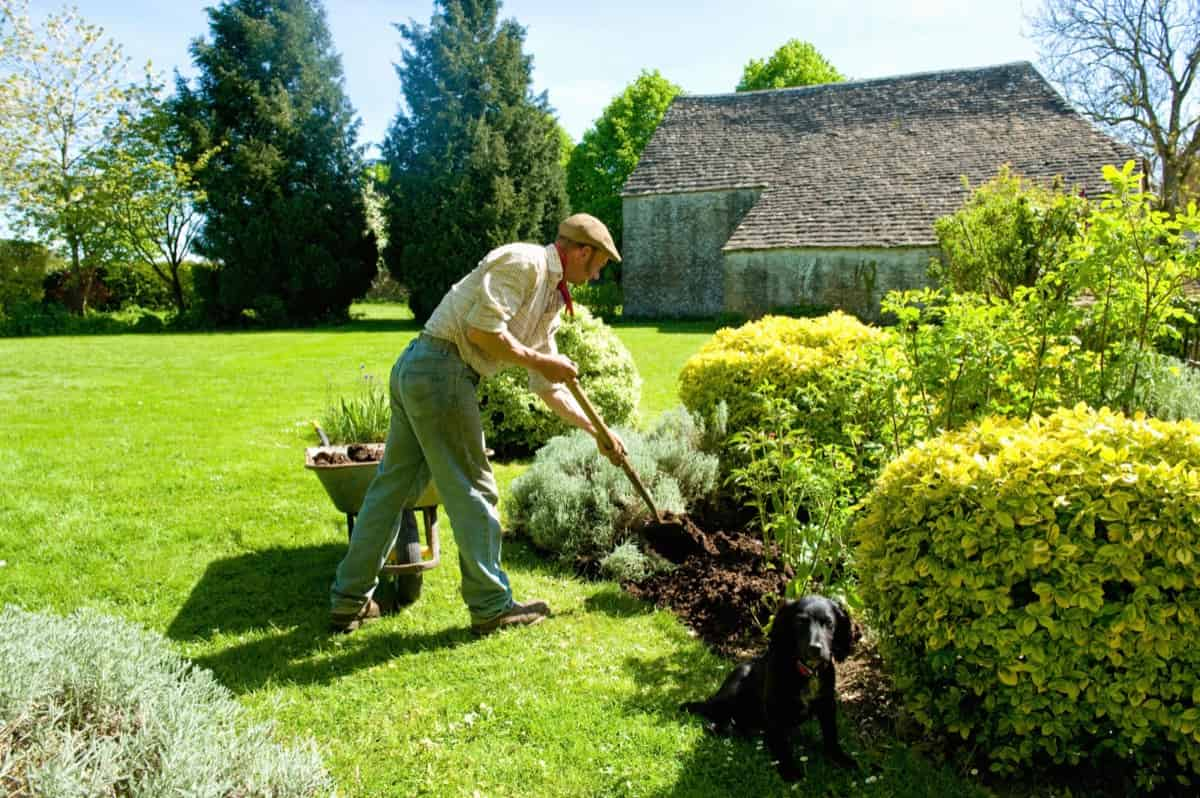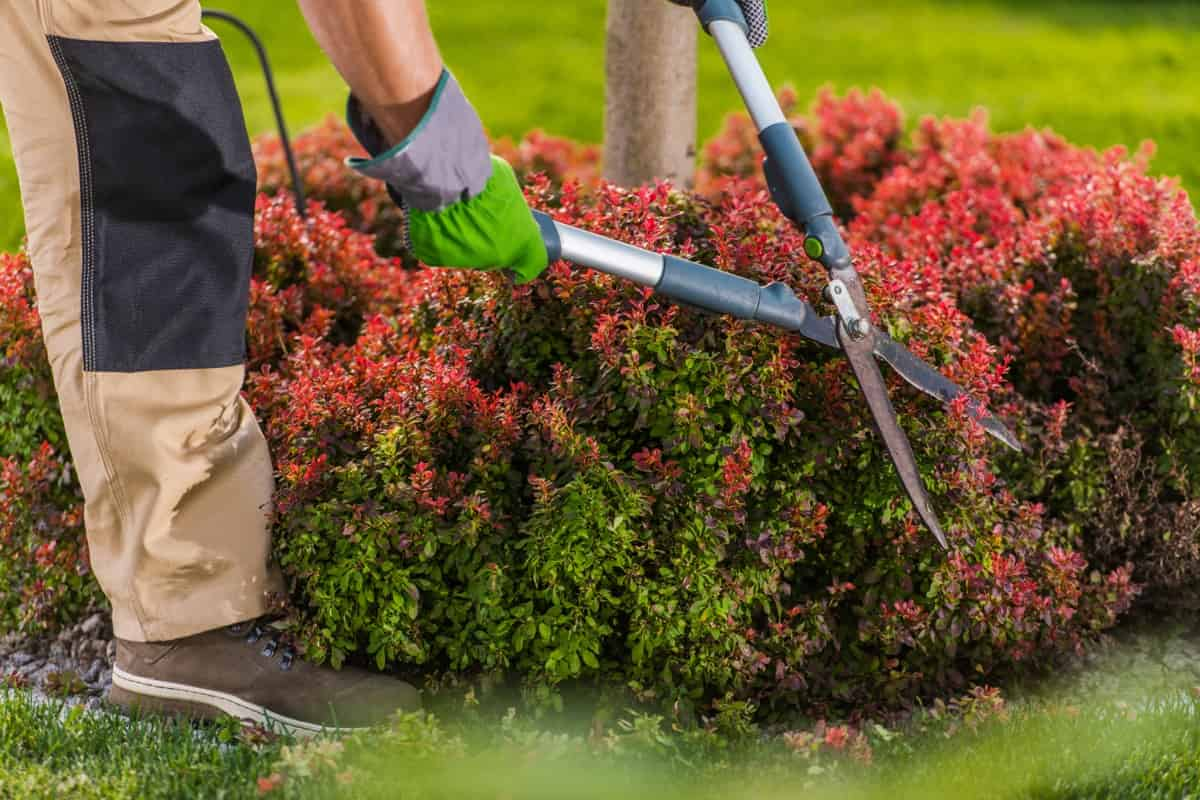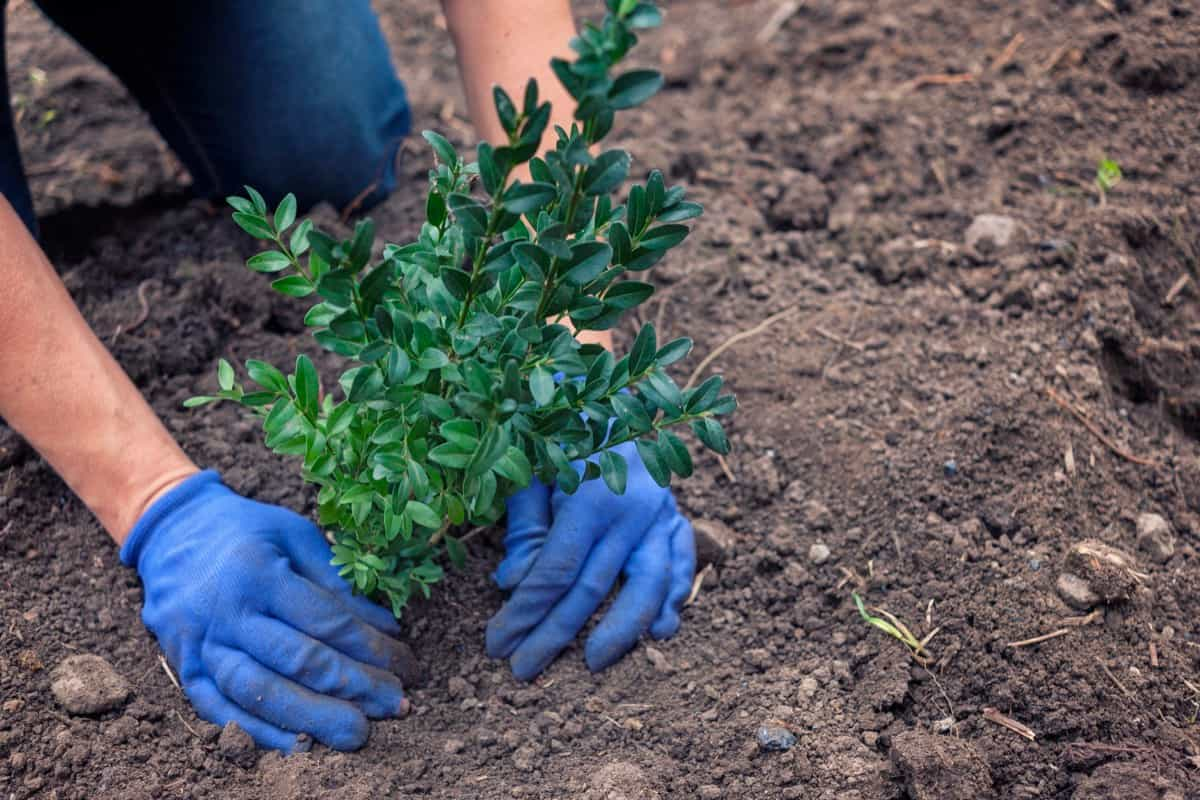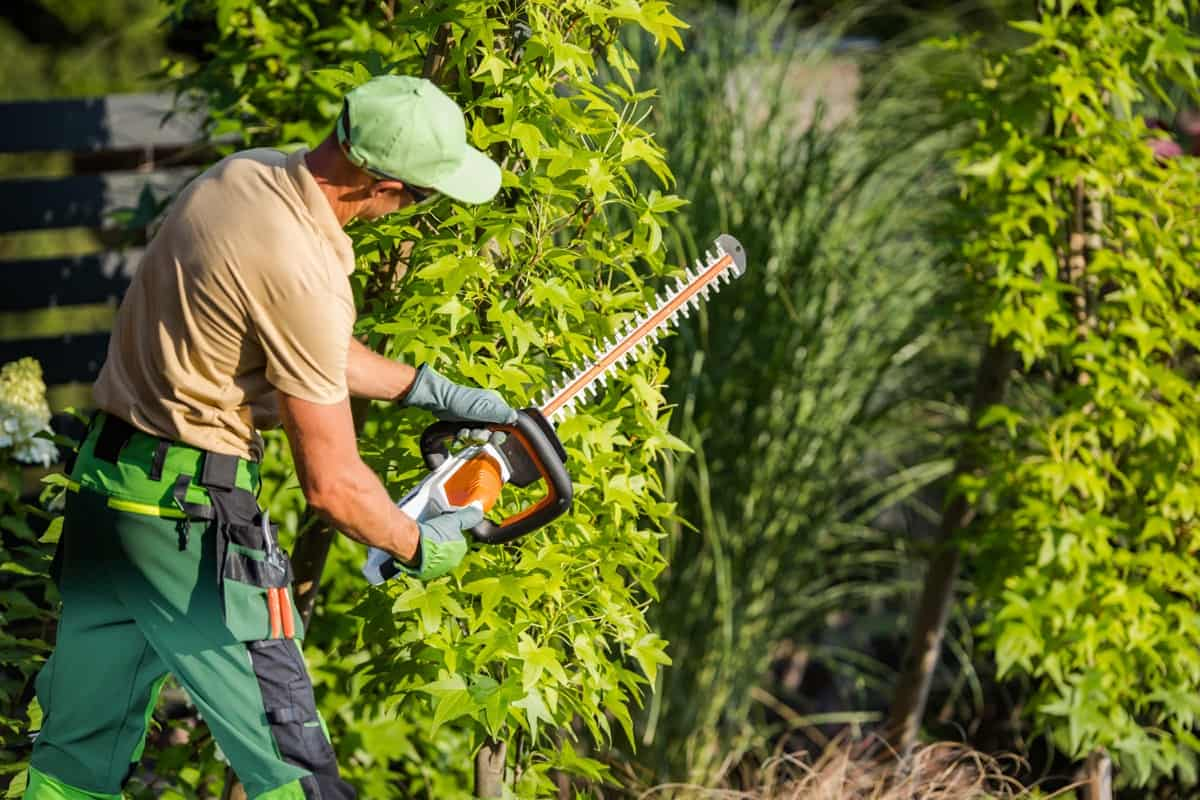Shrubs are the most important part of any landscape. They provide structure and interest and can create privacy or define outdoor living spaces. With so many shrub varieties available, knowing which ones to choose for your landscape can be difficult. When it comes to choosing shrubs for landscaping, there are a few things you need to consider.

First, consider the climate where you live and choose shrubs well-suited to your area. Secondly, think about the purpose of the shrub in your landscape design. Choosing the right shrubs for your landscaping can make a huge difference in how it turns out. Research your area’s climate and growing conditions, understand the maintenance needs of different shrubs, and consider how they will fit into your overall landscape design before purchasing.
How to Choose Shrubs for Landscaping
Think About Shrub Size
When planning your landscape, don’t forget to consider the size of your chosen shrubs. Dwarf varieties can create low-maintenance beds and borders, while larger shrubs provide privacy and windbreaks. Consider the mature height and spread of each variety when making your selection.
You need to think about the overall size of the shrub and how it will fit into your space. Take measurements of the area where you want to plant the shrub and compare it to the size of the shrub. Also, consider the growth rate of the shrub when making your decision. Some shrubs can grow large over time, so you must ensure enough space for them in the long run.
In case you missed it: 16 Best Evergreen Flowering Shrubs for Hedges

Shrub Placement in the Yard
There are a few things to remember regarding shrub placement in the yard. Think about the shrub’s needs in terms of light and water. Make sure you place it in an area that meets those requirements. Finally, consider the shrub’s height and spread when determining placement. You don’t want it to block your view or interfere with other plants in the landscape. With these factors in mind, you can choose the perfect spot for your shrubs.
Shrub Proximity to Other Plants
When choosing shrubs for landscaping, one important factor to consider is the proximity of the shrub to other plants. If you plan on planting shrubs near other plants or trees, choosing a variety that will not crowd out or compete with the other plants for resources is important. Some shrubs are known to be aggressive growers and can quickly take over a garden bed if left unchecked. When selecting a shrub for planting near other plants, be sure to choose a variety known to be non-invasive and will not spread aggressively.
Shrub Foliage Colors
When it comes to shrub foliage colors, there are endless possibilities. From the ever-popular green to more unique shades like blue or purple, the choices are nearly endless. And while some people prefer a single color for their shrubs, others mix and match different colors to create a more dynamic landscape. When choosing shrub foliage colors, there are a few things to remember. First, consider the overall color scheme of your landscape. If you already have a lot of green in your yard, adding some colorful shrubs can make your landscape pop.
On the other hand, if your landscape is mostly made up of neutral tones, adding some brightly colored shrubs can add some interest. Finally, don’t forget about function when choosing shrub foliage colors. While you may love that bright pink color, it might not be the best choice for a low-maintenance landscape. Likewise, if you’re looking for privacy from nosy neighbors, opting for evergreen shrubs with dense foliage is much better than something with colorful leaves that will fall off in the winter.
In case you missed it: 16 Fragrant Spring-flowering Shrubs: How to Grow, Planting, and Care

Drought-Tolerant Options
When it comes to shrubs, there are many different factors to consider. One important factor is the level of drought tolerance that the shrub has. If you live in a place that experiences periods of drought, it’s important to choose shrubs that can withstand extended periods of dryness.
When selecting a drought-tolerant shrub for your landscape, it’s important to choose one that will fit the needs of your particular location. Consider the amount of sun and shade the area receives and the soil type and drainage. With so many great options available, you will surely find the perfect shrub for your landscape.
Avoiding Deer Damage
When landscaping your home, you want to choose shrubs that will complement your home and provide the desired look for your yard. However, it is also important to consider which shrubs are most likely to avoid deer damage. Some species of shrubs are more resistant to deer than others, and by choosing these varieties, you can help keep your landscape looking its best.
Place plants in areas where deer are less likely to visit, such as near buildings or along busy roads. Use fencing to exclude deer from areas where they are not welcome. Be sure the fence is high enough (at least 8 feet) and made of sturdy materials that deer cannot easily push through or jump over. Plant various shrubs so that if one type is heavily browsed, other types may still be available for aesthetics and function.
In case you missed it: Cool-season Plants for Pollinators: Vegetables, Flowers, Fruits, Shrubs, and Herbs

Advantages of Native Shrubs
Regarding shrubs, there are two main types: native and non-native. Native shrubs naturally occur in a given area, while non-native shrubs have been introduced from another area. Both types of shrubs have advantages and disadvantages, so it’s important to consider what will work best for your landscaping needs. Native shrubs have several advantages over their non-native counterparts. First, they’re better adapted to the local climate and soil conditions, making them more likely to thrive in your yard.
Second, they provide food and shelter for local wildlife, such as birds and bees. Third, they help preserve the local ecosystem by preventing soil erosion and providing windbreaks. Finally, native shrubs require less maintenance than non-natives since they don’t need as much watering, fertilizing, and pruning. If you’re looking for low-maintenance plants that add beauty and value to your home, native shrubs are a great option. Just be sure to research beforehand to choose the suitable varieties for your landscape.
Compare Similar Shrubs
When choosing shrubs for landscaping, there are a few things to remember. Firstly, you should consider the overall look you hope to achieve. Once you have an idea of the style you are going for, you can start to narrow down your options. If you are looking for a low-maintenance option, consider evergreen shrubs.
These will retain their leaves year-round, so you won’t have to worry about them looking bare in winter. However, if you live in harsh winters, choose an evergreen that is hardy enough to withstand the cold weather. Once you know what general type of shrub you are looking for, you can compare different varieties side-by-side. This will help you narrow your options and find the perfect plant for your landscape.
Climate for Shrubs
When choosing shrubs for landscaping, it is essential to consider the climate in which they will grow. Shrubs are classified as either evergreen or deciduous, depending on their leaves. Both evergreen and deciduous shrubs can be found in various shapes and sizes, so there is sure to be one that will fit your needs. It is essential to select a shrub native to your region, as it will be better adapted to the local climate.
In case you missed it: When to Prune Hydrangea Varieties: A Step-By-Step Guide

Popular Shrub Choices
When it comes to shrubs, there are endless possibilities for landscape design. Choosing the suitable shrubs for your space will depend on various factors, including climate, soil type, and sunlight exposure. To get started, consider what look you want in your landscape. Once you have an idea of the overall aesthetic you’re going for, you can start narrowing down your choices.
When selecting shrubs, it’s essential to consider their mature size and growth habit. You don’t want to choose a plant that will quickly outgrow its space and become difficult to maintain. Once you’ve selected the perfect shrubs for your landscape, give them the proper care they need to thrive. This includes regular watering, fertilizing, and pruning.
Boxwood
Boxwood is a slow-growing, evergreen shrub that can be used as a hedge, foundation planting, or specimen plant. Wide boxwood varieties are available, ranging from 2 feet to 15 feet. When choosing a boxwood for your landscape, consider the plant’s mature size, the shape you want it to grow, and the amount of sun and shade it will receive. Boxwoods are generally low-maintenance plants that are resistant to pests and disease. Fertilize boxwoods in early spring with a slow-release fertilizer. Prune boxwoods as needed to maintain the desired shape.
Andromeda
If you are looking for a shrub to provide your landscape with beautiful flowers, you should consider Andromeda. This shrub produces showy, pinkish-white flowers that will surely add charm to your yard. Additionally, Andromeda is a relatively low-maintenance plant, so you won’t have to spend too much time caring for it.
In case you missed it: Top 21 Best Flowers for Bees

Forsythia
Forsythia is a popular shrub for landscaping because of its showy, yellow flowers that bloom in early spring. This deciduous shrub is easy to care for and tolerates many growing conditions. Forsythia can be used as a standalone specimen plant or in mass plantings for a dramatic effect.
Lacecap Hydrangea
Lacecap hydrangeas have a distinctive appearance, with large, flat clusters of tiny flowers surrounded by an outer ring of larger flowers. They grow best in moist, well-drained soil in partial shade. Lacecap hydrangeas are relatively low-maintenance and can tolerate some drought once established.
Mountain Laurel
Mountain Laurel grows best in partial to full sun and moist, well-drained soil. Mountain Laurel can reach up to 15 feet tall and wide, making it a good choice for a foundation planting or hedge.
Oleander
Oleander is an excellent option if you’re looking for a shrub to add color to your landscape. This evergreen shrub is available in various colors, including pink, red, and white. Oleander is also relatively easy to care for – it tolerates salt and drought.
Firethorn
Regarding shrubs for landscaping, there are many factors to consider. One of the most important is the climate in which you live. Some shrubs are better suited for warmer climates, while others thrive in cooler weather. Firethorn is a shrub that does well in both warm and cool climates. It’s an evergreen that produces red berries, making it a beautiful addition to any landscape.
In case you missed it: How to Grow and Care for Begonia in the Garden: A Beginners Guide

Plum-Leaf Azalea
When choosing shrubs for landscaping you should consider many factors, but one of the most important is the climate. The plum-leaf azalea is a beautiful shrub that thrives in warm weather and tolerates cold temperatures better than most azaleas. This hardy plant can reach heights of 10 feet and produces clusters of white or pink flowers in spring. The foliage turns a deep red in fall, providing year-round interest.
Conclusion
When it comes to choosing shrubs for landscaping, there are a few things you need to consider. First, consider the climate and soil conditions in your area. Next, think about the size and shape of the shrub and how it will fit into your landscape design. Finally, choose a low-maintenance shrub that will provide year-round interest. With so many different types of shrubs available, you will surely find one that will meet your needs.
- How to Grow Hibiscus from Flower
- Plantation Ideas for Home Decoration: A Beginners Guide
- Flower Garden Designs and Layouts for Beginners
- Planting and Spacing Techniques in Papaya: A Beginner’s Guide
- Growing Gold: Essential Techniques for Planting Pineapples
- How to Make Kalanchoe Plant Bushy: Home Remedies and Solutions
- 11 Reasons Why Your Gardenia is Not Blooming: Home Remedies and Solutions
- Eco Elegance: The Guide to Designing a Drought-Tolerant Landscape
- Gardening on a Slope: Strategies for Hillside Landscaping
- Nourish and Flourish: Top Organic Mulches for Thriving House Plants
- Everything You Want to Know about Indian Mogra Flower: Discover Uses and Growing
- Green Thumb Success: Expert Tips for Cultivating Greenhouse Pumpkins All Year Round
- Maximize Growth & Flavor: The Ultimate Guide to Companion Planting in Herb Gardens
- How to Control Rhododendron Problems Naturally: Home Remedies and Organic Ways to Fix Them
- Natural Magic: The Remarkable Benefits of Cinnamon for Plants
- Best Steps to Revive Dying Tulip with Natural and Organic Treatment
- 10 Reasons Why Your Angel Trumpet is Not Blooming: Remedies and Treatment
- How to Fix Periwinkle Leaf and Flower-Related Problems: Natural Remedies and Solutions
- How to Fix Zinnias Leaf and Flower Problems: Discover Natural and Home Remedies
- Organic Steps to Induce Lemon Tree Flowers: A Comprehensive Guide
- Bloom Booster: Crafting the Perfect Homemade Bougainvillea Fertilizer
- Optimizing Growth: A Guide to Applying NPK Fertilizer for Potted Plants
- 10 Best Homemade Fertilizers for Rubber Plant: DIY Recipes and Application Method
- How to Boost Female Pumpkin Flowers: Effective Steps for More Flowers and High Yields
- Transform Your Indoor Garden: Top Benefits of Pink Salt for Houseplants
- 10 Best Homemade Fertilizers for Peacock Plants (Calathea): Easy DIY Guide
- Unlock Blooms: 9 Reasons Why Your Potted Chrysanthemum is Not Blooming
- 8 Reasons Why Your Potted Hibiscus is Not Blooming: Fix it with Simple Solutions
- Unlock Blooms: 9 Key Reasons Your Potted Frangipani Won’t Flower
- 10 Reasons Why Is My Ice Plant Not Blooming: Remedies and Treatment
- 10 Reasons Why My Potted Hydrangea Not Blooming: Treatment and Remedies
- 10 Reasons Why is My Wisteria Not Blooming: Remedies and Treatment
- 10 Reasons Why is My Goldfish Plant Not Blooming: Remedies and Treatment
- Maximize Your Space: Ultimate Guide to Balcony Gardening with Grow Bags
- 10 Reasons Why Your Iris is Not Blooming: Remedies and Treatment
- 10 Reasons Why Your Anthurium Plant is Not Blooming: Treatment and Remedies